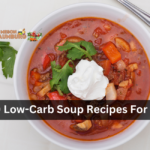Why is losing the last few pounds constantly the most difficult? It seems unfair that it is frequently simpler to lose 20 pounds than the previous five. So, how to get rid of the last bit of belly fat.
You’re not alone if you’ve been dieting, eating healthier, and working out but still can’t seem to lose that last bit of fat on your belly. Your body is designed to resist further weight loss, mainly if you are already close to your ideal weight.
If you’re exhausted or feeling stuck in your diet, continue reading to discover the most typical explanations for why stubborn abdominal fat won’t go away and a few things you can do about it.
Why Is It So Difficult To Lose Lower Abdominal Fat?
Abdominal fat is typically the most difficult to lose because it is believed to be released more slowly during lipolysis than fat from other body areas.
In fat cells, there are two categories of receptors: alpha and beta. Beta-receptors instruct cells to discharge fatty acids for energy use, whereas alpha-receptors lead cells to store fat. Fat cells in the abdomen may contain more alpha receptors than fat cells in other body regions. It may be one of the reasons why it is so difficult to lose excess abdominal fat.
In addition, because many people lose their abdominal fat last, shedding those last few pounds may necessitate a more diligent nutrition and physical activity strategy than when you first began your weight loss voyage.
How To Get Rid Of The last Bit Of Belly Fat?
There are many way to weight loss and reduction of lower belly fat:
1. Track Your Daily Nutrition Intake
Your caloric requirements are proportional to your current weight, lean mass, and fitness requirements. And it is easy to determine how much you should consume each day. Using an online calculator or when registering for a food-tracking app, deciding on how many calories you need daily is simple. It is an essential step towards your success.
After determining your daily caloric needs, the next step is to hold yourself accountable. It is nearly impossible to determine if you are adhering to your diet if you are not monitoring your calorie intake using a food-tracking program or an app. It is the simplest and most effective method for controlling caloric information. It will also hold you accountable for your diet and demonstrate your level of consistency.
If you need to keep note of your daily food and drink consumption, you should begin. It is likely the best measure you can take toward your fitness objectives. And if you are already tracking, here are some essential considerations:
Keep track of everything you eat and drink. Include added oils, sauces, tiny snacks, drinks, alcoholic beverages, and cheat meals to calculate their weekly impact.
Utilize weekly means. You may be startled by how many calories your weekend indulgence adds to your weekly average. If you consume 1,500 calories per day during the week but consume 3,000 calories on Saturday, your daily average may be closer to 1,700 calories.
As accurately as feasible, weigh and portion your food. Even minute differences in portion sizes can build up, especially when calories are strictly monitored.
The Trifecta app has a searchable database of over 6 million food items, a barcode scanner for packaged food, and the capacity to monitor your weekly calorie average.
2. Add in Strength Training
Start lifting weights immediately! Strength training is one of the most effective long-term strategies for fat loss, as it maintains a healthy body composition.
Building muscle increases your resting energy expenditure, which allows you to consume more food and tips the scales in favor of weight loss. In addition to promoting more lean mass, strength training may also help you expend more fat throughout the day.
Additionally, muscle creates definition, giving you a toned appearance, and can make you appear slimmer overall. It is one of the most important arguments against basing your success on your weight.
Even without abdominal exercises, strength training can be an effective method of building abdominal muscle. Correct, you do not need to perform another crunch or any other abdominal exercise if you are training with hefty weights that engage your core and entire body.
3. Increase High-Intensity Aerobic Exercise (HIIT Cardio)
A lengthy run or elliptical workout may no longer suffice. While you may burn calories with a moderate workout routine, the secret to increased fat burning is to increase calorie burn even after you’ve left the gym – by increasing lean mass or VO2 max.
Muscle is more metabolic, so it helps you expend more calories at rest, and the more power you have, the more efficiently you store and utilize carbohydrates for energy.
VO2 max measures the efficiency of the body’s access to adipose stores for energy and oxygen during intense exercise. In addition, increasing your VO2 max will increase the fat you can burn.
HIIT may promote fat loss and increase stamina more rapidly than endurance exercise alone. HIIT helps you optimize fat-burning all day and can whip you into shape extremely quickly because most activities are brief and burn many calories.
Tabata is a 4-minute HIIT exercise that has been shown to expend up to 400 calories daily. Dr. Izumi Tabata developed it at the National Institute of Health and Sports in Tokyo, and it will send your metabolism into overdrive. Choose an intensely repetitive exercise, such as sprints, burpees, mountain climbers, or jumping squats, and take your stopwatch or smartphone with a timer.
According to Tabata Science, the most effective interval consists of 20 seconds of maximal effort and then 10 seconds of rest, with eight intervals (8 x 20 seconds + 10 seconds pause between each set = 4 minutes). Try to maintain the same number of reps throughout each round; you should be utterly exhausted by the end.
If the idea of HIIT terrifies you, you shouldn’t be. You are merely adjusting the intensity to your fitness level; you can go at you’re own pace! Incorporate more HIIT training into your weekly workouts or incorporate Tabata when time is limited.
4. Cut out Sugar-Added and Processed Foods
Studies continue to demonstrate that diet plays a role in fat loss. The most effective fat-burning regimens should be rich in vegetables. Most non-starchy vegetables, excluding peas, maize, and potatoes, are low in calories and rich in essential nutrients. Micronutrients, or vitamins and minerals found in vegetables, are crucial to weight management because they help to control appetite and promote a healthy metabolism.
Heavily processed foods loaded with added trans fats, sodium, and sugar will not aid in fat loss or weight loss. According to one study, your body could expend twice as many calories by digesting foods that are not processed. Growing evidence suggests that a diet comprised primarily of whole foods is associated with more significant weight loss.
In addition, in one study, regardless of genetic makeup, those who consumed more vegetables, fewer processed foods, and fewer high-sugar beverages over 12 months lost the most weight.
5. Eat a High in Protein Diet
An optimal macro balance will ensure you utilize the food you consume as efficiently as possible, resulting in a more significant breakdown of fatty tissue for energy.
Begin by consuming more protein. Protein is one of the most advantageous nutrients for weight loss. It helps maintain lean mass in a calorie deficit, and maintaining lean mass while losing weight increases the likelihood of fat loss!
In addition to reducing appetite and cravings, protein is the most thermogenic macronutrient.
While your macronutrient intake can significantly reduce fat loss, protein is the most essential macronutrient. Determine how many grams of protein you require daily and make it a priority to consume this quantity.
6. Drink more water and less sugary beverages.
Eliminating high-calorie beverages, particularly sugary beverages like soda and juice, is a simple and effective way to reduce caloric intake and improve macronutrient balance. It includes excessive protein beverages as well. Unless you use protein beverages as a complete meal replacement or require them for training and recovery, they may add unnecessary calories to your daily intake.
Increasing water intake will keep you hydrated and operating like a well-oiled machine. And be sure to record all your beverages alongside your sustenance to find the optimal balance.
7. Cut out Alcohol
It may be appropriate to consider a brief abstinence from alcohol. Or, if you’re unwilling to give it up, you may want to thoroughly consider how much you’re drinking and ensure you’re keeping track of the calories in your beverages.
It is possible to enjoy a few alcoholic beverages occasionally and still achieve your fitness objectives, but it all depends on how much you consume. You should also choose more low-calorie drinks and avoid too many options with added sugar and calories.
8. Learn How to Manage Stress
Sometimes, the most challenging aspect of weight loss is mental. Here are some of the most effective ways to manage tension and improve your diet-related outlook.
Try out yoga! Or practice meditation. According to research, yoga is associated with reduced stress, increased weight loss, and enhanced mood. Yoga focuses on controlling your respiration and becoming more aware of your reactions to the world.
You can control your breathing and mental response to tension by regularly practicing yoga or learning to quiet your mind through meditation. You may even discover that your mood and general sense of well-being improve.
Additionally, you can give yourself a respite and invest in some much-needed self-care. Take time to unwind with a good book, get a massage, or take time off work to reduce your tension levels. Surround yourself with positive individuals and enjoyable activities. Allow yourself more time and fortitude to succeed if you’ve pushed yourself too hard.
9. Get More Sleep
Stress may cause you to lose sleep, but sleep deprivation may worsen your fat storage problem.
You should get at least seven hours of uninterrupted, high-quality sleep per night. Getting up on sleep on the weekends will not compensate for the lack of sleep you experienced during the week.
Make sleep a top priority and set aside time each night to sleep. Remove distractions like your television, cell phone, and pets, and locate a dark, quiet place to sleep. Utilize earplugs or a sleep mask if necessary. Your body and mind will appreciate your efforts.
10. Increase Intake of Monounsaturated Fat
Some limited research suggests that increasing your intake of monounsaturated fats from foods like avocados and olive oil may help you lose lower abdominal fat, particularly visceral fat.
Monounsaturated fat is a type of healthful fat that may boost fat oxidation and metabolism after a meal by increasing thermogenesis.
However, it is essential to observe that these results are more strongly associated with diets that replace saturated fat with monounsaturated fats. In other words, the key is to increase the amount of beneficial fats in your diet.
Thank you for reading…..










